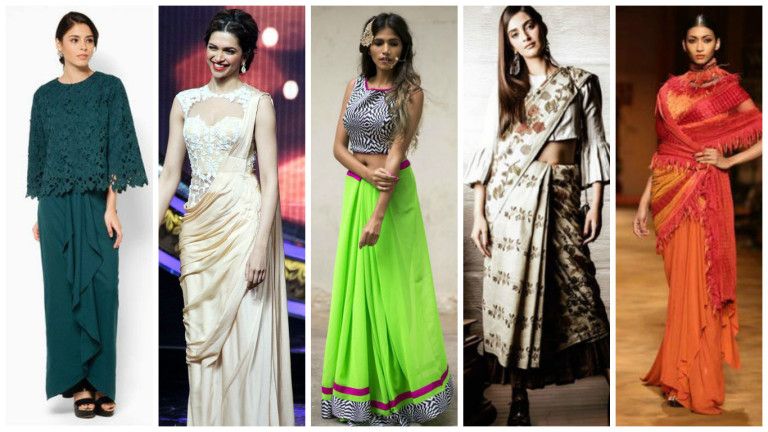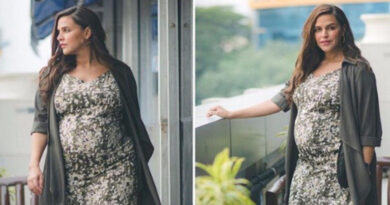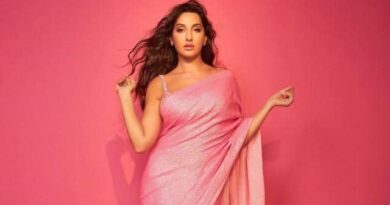Evaluation of 6 Yards Beauty
A saree is not simply an outfit. It’s a power, an identity, a language capturing everybody’s attention and make heads turn with a stunning saree. A simple saree gives you the utmost sophisticated look. Add glamour to your everyday life. Deeply rooted in its cultural values the modern Indian woman prefers the saree on special occasions yet retains its grace and beauty. Only an Indian woman can wrap six yards of fabric in a way that covers enough to make her look modest yet bare enough to make her look sexy!
Famous Fashion designer Sabyasachi Mukherjee, who is known for his saree designs, once stated, “Saree is the most wonderful dress in the world and people across the globe admire it, and identify Indian women with it.” Even he criticised the younger generation of Indian women while responding to a question on difficulties women face in draping a saree and giving preference to western outfits saying that it’s shameful if they don’t know how to wear saree. Saree is a part of our culture, so we need stand up for it
An integral part of every Indian household
Saree has derived its name from the Sanskrit term ‘sati’ which means “a strip of cloth.” Saree is 4.5 metres to 9 meters cloth which is worn by women in India.
Saree is the world’s oldest and perhaps the only existing unstitched garment from the past. From wearing in traditional occasions to wearing in formal functions, saree is just an inseparable attire of woman’s wardrobe.
History of Draping Saree
There are more than 100 ways of draping sarees. With time style of saree has modified but it still has the same impact on grace and beauty of a woman. The earliest style of saree was just a piece of cloth worn on the lower torso. Later it was divided in two categories – the higher class women used to tie a piece of cloth on upper torso known as Angavastram while lower caste women remained bare-breasted.
Evolution over the times
It was during Persian era that stitching was introduced in Indian garments and tight fitted blouse or Cholis came into existence. Apart from blouses, Persians also introduced stones embroidery and motifs to the saree. During Mughal era Indian civilization went under a lot of change particularly in art and traditions. Mughals introduced silk sarees and the modern day draping style. They also introduced various dyes to color the fabrics.
Later Kadambari Devi, sister-in- law of Gurudev Rabindra Nath Tagore, introduced pleats to the sarees. Earlier, it was worn as just loose garment with no
concept of pleating or folding.
Recently there are so many ways of saree draping depending on the regional division and occasions. Earlier sarees were just worn by wrapping around the waist with pleats tucked in and the pleates pallu which falls over the shoulder.
Impact of bollywood
Bollywood introduced many different ways of draping saree. One of the earliest being Mumtaz style which was wrapped around the waist with less pleats and the pallu parts were wrapped around thighs to enhance the curves then it was pleated and put on shoulder.
During 90’s the light weighted and see through fabrics trended in bollywood that added glamorous touch to the whole look. Saree draping styles has been popularized a lot by Sanjay Leela Bhansali, like- Gujarati style of front pallu and Bengali atopouri shari style.
In modern days of fusion and experimentation saree gown,saree with belts,saree with cape blouse or jackets and sarees wrapped around the neck lyk stole is in trend.Many bollywood and Hollywood celebrities have been spotted adorning saree in different and unique ways.
Saree styles co-exist with traditional norms
In the 21st century, a variety of saree styles co-exist with traditional norms that are selected by the wearer, based on her socio-cultural values, beliefs and customs. The preference for the saree is also related to type of saree, fabric, style of draping, the occasion for which it is worn as well as the personality of the wearer. For example formal occasions have simplest way of saree draping with proper pleats folded on shoulders while other occasions like- marriage and house parties are the time of experimenting with the styles.
Thus we can say, Sarees are like Indian women – so clever. From business meetings to first nights, from political talks to red carpets, from college farewells to Indian kitchens, they actually have many avatars.




